Traveling to Iran by Land | All You Need to Know
Iran, with its rich history, vibrant culture, and stunning natural landscapes, offers a unique travel experience. While flying is a common way to reach Iran, for some travelers, the journey itself is just as important as the destination.
Traveling to Iran by land provides a unique opportunity to experience the changing landscapes and cultures bordering Iran, making your arrival even more special.
This guide will explore the possibilities of overland travel to Iran from various regions, addressing visa requirements, safety considerations, and different travel styles like car travel.
Iran Border Crossings
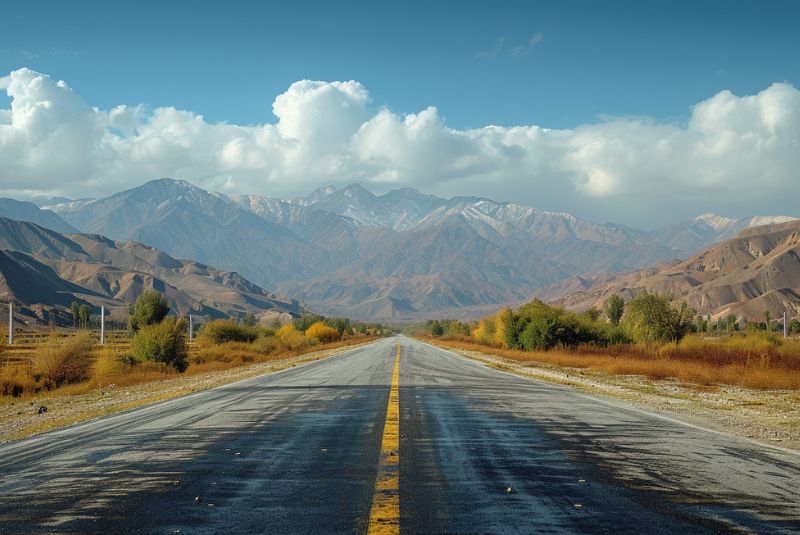
Iran shares land borders with seven countries: Turkey, Armenia, Azerbaijan, Turkmenistan, Afghanistan, Pakistan, and Iraq. However, some borders may have limitations due to political situations. It's crucial to research the specific border you plan to use for current guidelines. Here's a closer look at some of the major crossings:
- West-Turkey: Iran's western border stretches along Turkey. The busiest crossing point is Gurbulak (Turkey) - Bazargan (Iran).
- Northwest-Armenia and Azerbaijan: Armenia borders Iran to the northwest. The sole land border crossing is Nordooz (Iran) - Agarak (Armenia). Iran also has a northwestern border with Azerbaijan. Two major crossings are Astara (Iran) - Astara (Azerbaijan) and Bileh Savar (Iran) - Bilasuvar (Azerbaijan).
- Southwest-Iraq: Iraq flanks Iran's southwestern border. The Shlamcheh (Iran) - Zurbatiyah (Iraq) crossing is located here. Due to ongoing security concerns, travelers should check the latest advisories before using this border.
- East-Afghanistan and Pakistan: Iran borders Pakistan to the east. Mirjaveh (Iran) - Taftan (Pakistan) and Rimdan (Iran) - Mand (Pakistan) are important southeastern crossings. Due to the ongoing political situation in Afghanistan, using this eastern border for overland travel is currently not recommended.
- Northeast-Turkmenistan: Turkmenistan lies to the northeast of Iran. The BajgIran (Iran) – Sarahs/ Serakhs (Turkmenistan) crossing is a major point of entry.
| Read more: Are Iranians Tourist Friendly?
Traveling to Iran by Land from UK
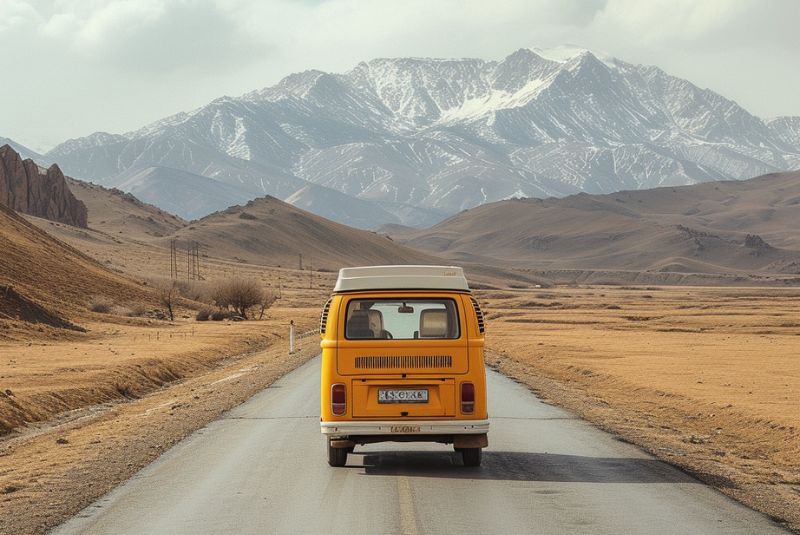
There are a couple of possible routes you can take to travel Iran by land from Europe, both with some challenges:
Through Turkey: This is the most common route and likely the easiest. You can drive or take a bus through Turkey, entering Iran at one of the several border crossings along the long border. The most popular border crossings are:
- Gurbulak on the Turkish side, Bazargan on the Iranian side (northwestern Iran)
- Kapıköy on the Turkish side, Esendere on the Iranian side (western Iran)
Through Armenia: This route is less common but possible. You can drive or take a bus through Georgia and Armenia, entering Iran at the Agarak/Norduz border crossing.
| Related: Can I Travel to Iran from UK?
Traveling to Iran by Land from Africa

Traveling overland from Africa to Iran in 2024 is an ambitious adventure, requiring careful planning and the right preparation. There are two main routes to consider:
- The Eastern Route: This route goes through Egypt, Sudan, South Sudan, Ethiopia, and Djibouti, before entering Yemen and then possibly Saudi Arabia (depending on political situations and border restrictions).
- The Western Route: This route travels along the Mediterranean coast, passing through Morocco, Western Sahara, Mauritania, Senegal, Mali, Niger, Chad, and Libya before reaching Egypt.
Note that these routes are currently (as to 2024) not recommended due to ongoing political unrest and safety concerns in several countries along the way.
Here's why overland travel in Africa is challenging right now:
- Several African countries experience ongoing conflicts or political tensions that can make travel dangerous.
- Certain areas may have high crime rates, kidnapping risks, or limited infrastructure, making travel difficult and potentially risky.
- Border crossings in some African countries can be slow, bureaucratic, and unpredictable.
| Discover: Things to Know Before Traveling to Iran
Traveling to Iran by Land from India
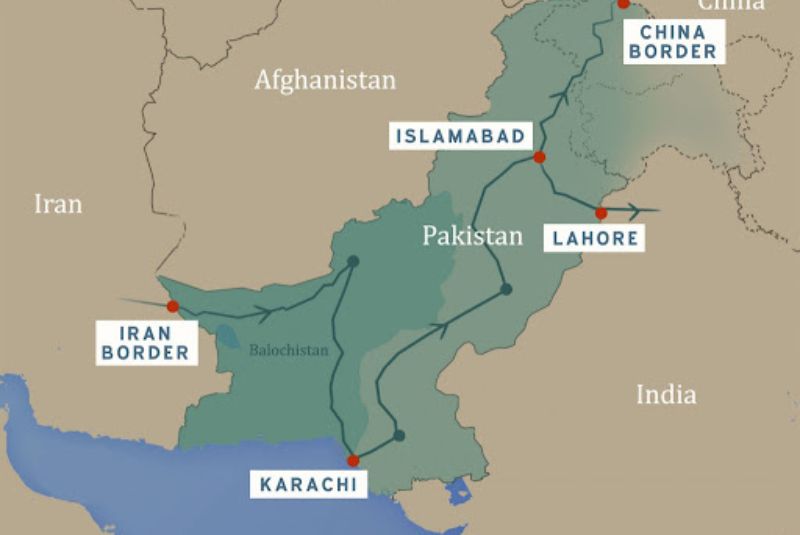
Traveling overland from India to Iran has its challenges, but it's achievable with careful planning. Here's a breakdown considering safety:
- Route 1 (Through Pakistan): Travel through Pakistan, potentially crossing cities like Karachi, Lahore, and Quetta before reaching the border. Enter Iran at the Mirjaveh/Taftan border crossing.
- Route 2 (Alternative - Caspian Sea Ferry): Travel overland to a country bordering the Caspian Sea, like Azerbaijan or Turkmenistan. The cities you cross depend on your chosen route are Delhi, Amritsar (India), Almaty (Kazakhstan), and Ashgabat (Turkmenistan). Then, take a ferry across the Caspian Sea from a city like Baku (Azerbaijan) or Turkmenbashi (Turkmenistan) to reach the Caspian Sea. Popular Caspian Sea destinations in these countries include Baku and Alat (Azerbaijan) or Turkmenbashi and Avaza (Turkmenistan).
The best route depends on your risk tolerance and travel style. If you prioritize avoiding areas with potential safety concerns, the Caspian Sea ferry route might be a better choice. However, if time is a factor and you feel comfortable traveling through Pakistan with proper precautions, the overland route can be an option.
Traveling to Iran by Land from USA
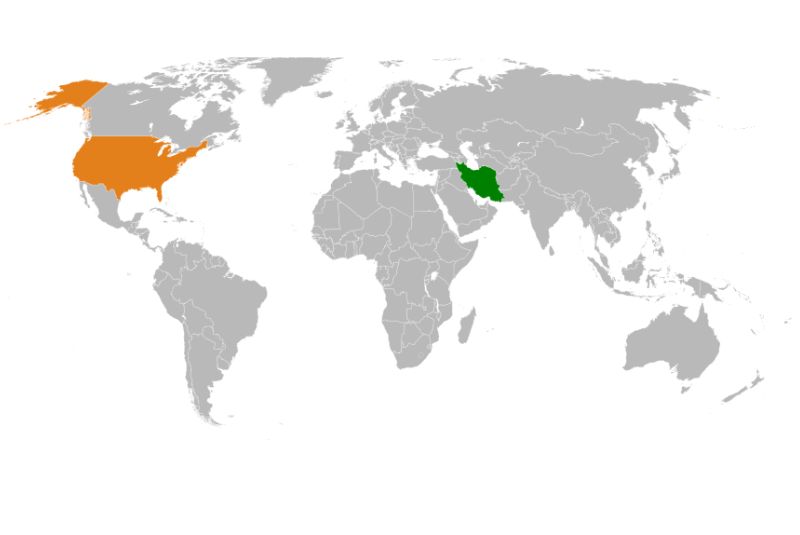
There's no direct land route between the US and Iran. You'd need to travel through multiple countries, each with their own entry requirements and potential restrictions for US citizens. Also, some of the countries you might traverse could have security risks. Even if you manage to navigate the complexities of visas and travel routes, you'll be entering a country where the US government has limited consular services. This means if you encounter legal trouble, US support might be restricted.
If your heart is set on visiting Iran, consider flying in from a third country with relaxed travel restrictions for US citizens.
| Related: Can I Travel to Iran from USA?
Land Border Visa and Entry Requirements for Iran
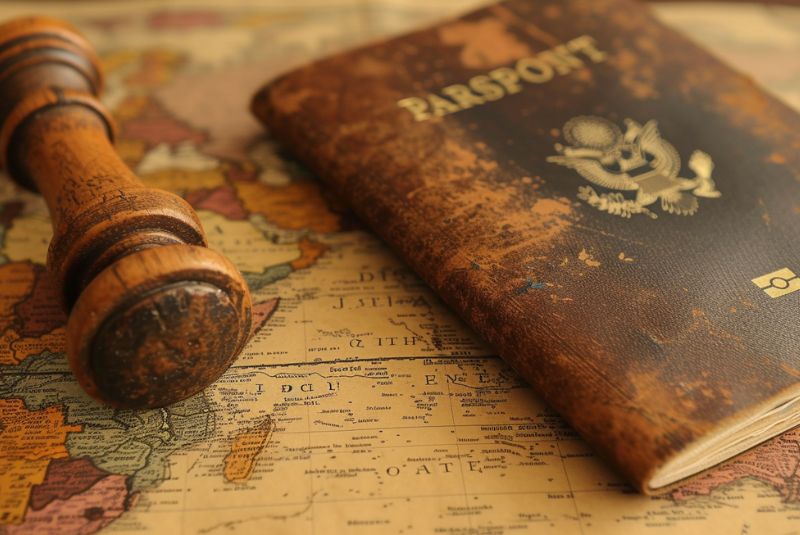
Obtaining a visa and meeting entry requirements are essential for land travel into Iran.
Visas:
- Unlike air travel (where some nationalities have exceptions), a pre-arranged visa is typically required for land entry into Iran.
- Applications are submitted at Iranian embassies or consulates in your home country.
- Specific requirements (documents, fees, processing times) vary by nationality.
- Joining a tour company or having an Iranian sponsor can simplify the process.
| To obtain Iran's visa as easy as possible, check out our Visa services.
Entry Requirements:
- A valid passport with at least 6 months remaining validity is mandatory.
- Have your original visa and any completed application forms ready for inspection.
- Proof of onward travel might be required.
- Research Iran's customs regulations regarding prohibited items.
- Consider comprehensive travel insurance.
| Suggestion: Visiting Iran as a Woman: Is It Safe?
Additional Considerations:
- Currency exchange options at land borders might be limited. Exchange some currency beforehand.
- Dress modestly, especially women (long sleeves and trousers recommended).
- Ensure travel insurance covers medical emergencies and potential land border crossing risks.
| Discover: How Much Does It Cost to Travel to Iran
Transportation Options When Traveling to Iran by Land

Exploring Iran by land offers a myriad of transportation options, each with its own advantages and considerations. From buses and trains to private vehicles, travelers can choose the mode of transportation that best suits their budget, comfort preferences, and itinerary. Let's take a closer look at the available options:
Buses
Pros:
- Buses connect major cities and towns across Iran, making them a convenient and accessible mode of transportation.
- Bus tickets are generally budget-friendly, making them a cost-effective choice for travelers on a tight budget.
- Many long-distance buses offer comfortable seating, air conditioning, and onboard amenities such as snacks and restrooms.
Cons:
- Bus schedules may be fixed, limiting flexibility in travel plans.
- Compared to other modes of transportation, buses may take longer to reach certain destinations due to frequent stops and slower speeds.
| Suggestion: Alcohol in Iran | All You Need to Know
Trains
Pros:
- Train travel in Iran offers breathtaking views of the country's diverse landscapes, making it a scenic and enjoyable experience.
- Trains typically provide comfortable seating, dining options, and sleeping compartments on overnight routes.
- Trains can be faster than buses for long-distance travel, especially on popular routes between major cities.
Cons:
- While trains connect major cities like Tehran, Isfahan, and Shiraz, they may not reach more remote or off-the-beaten-path destinations.
- Train tickets can sell out quickly, especially during peak travel seasons, so it's advisable to book in advance.
| Check out our train ticket reservation services.
Private Vehicles, Renting Cars or Hiring Private Drivers
Pros:
- Traveling to Iran by car via renting or hiring a private driver offers unparalleled flexibility to explore remote areas and off-the-beaten-path destinations at your own pace.
- With a private vehicle, you can tailor your itinerary to your preferences, stopping at scenic viewpoints, historical sites, and hidden gems along the way.
- Having your own vehicle allows you to travel in comfort and privacy, with the option to take breaks and rest as needed.
Cons:
- Renting a car or hiring a private driver can be more expensive than taking buses or trains, especially for solo travelers or small groups.
- Driving in Iran may present challenges such as unfamiliar road signs, traffic congestion, and language barriers, particularly for foreign visitors.
| Suggestion: Most Common Farsi Phrases for Tourists in Iran
Attractions in Iran near Entering Borders
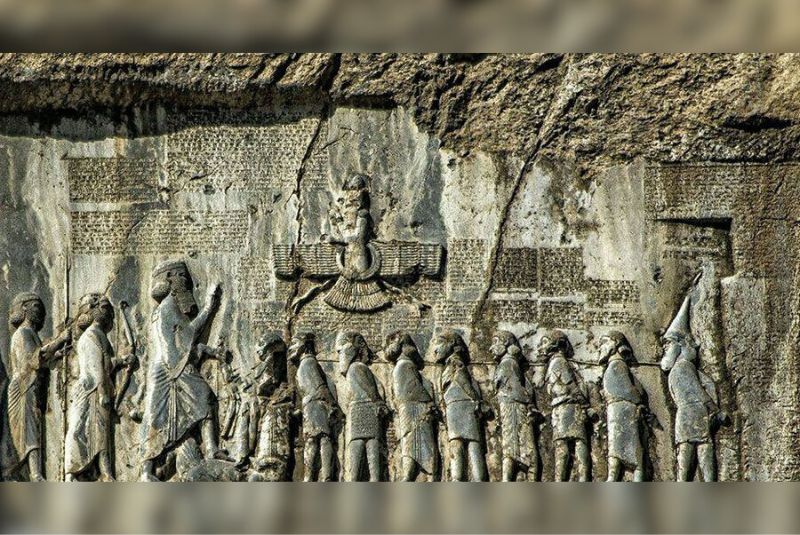
Iran has a rich history and culture, with many stunning attractions scattered throughout the country. Here are some "must-see" attractions you might consider visiting depending on your entry point when traveling to Iran by land:
Northwest Borders (Turkey, Armenia, Azerbaijan)
- Tabriz: A historic city in Iranian Azerbaijan, Tabriz was once a major center on the Silk Road. Don't miss the UNESCO-listed Tabriz Bazaar, one of the world's largest covered bazaars, and the impressive Blue Mosque (Masjid-e Kabud).
- Kandovan: A village carved into volcanic rock formations, Kandovan offers a unique glimpse into traditional troglodyte living.
- Mount Damavand: The highest peak in Iran (and the Middle East), Mount Damavand is a dormant volcano that attracts mountaineering enthusiasts.
West Border (Iraq)
- Kermanshah: This city in western Iran is known for its Taq Bostan, a series of Sassanian era rock reliefs depicting battles and coronations of Sassanian kings.
- Bisotun: An archaeological site featuring a UNESCO-listed inscription by Darius the Great, the Bisotun inscription is a fascinating piece of Achaemenid history.
- Sanandaj: The capital of Kurdistan province, Sanandaj offers a glimpse into Kurdish culture and boasts scenic natural beauty in the surrounding areas.
| Read more: Social Media in Iran - Accessing & Staying Connected
Northeast Border (Turkmenistan)
- Mashad: Iran's second-holiest city, Mashad is a pilgrimage center for Shia Muslims due to the shrine of Imam Reza. The vast Imam Reza Shrine complex is a sight to behold.
- Gonbad Kavus: A UNESCO-listed tower tomb from the Seljuk era, the Gonbad Kavus tower is a unique architectural marvel in northeastern Iran.
- Nishapur: An ancient city with a rich history dating back to the Achaemenid period, Nishapur boasts archaeological ruins and the turquoise-domed Mausoleum of Omar Khayyam, a celebrated 12th-century poet.
Southeast Border (Pakistan)
- Zahedan: The capital of Sistan and Baluchestan province, Zahedan is a cultural hub with a rich Baloch heritage. The Grand Mosque (Masjid Jame) is a notable landmark.
- Taft: An ancient city along the historical Silk Road trade route, Taft is known for its traditional mudbrick architecture and historical sites.
| Suggestion: Iran Tourist Attractions
Is It Safe to Travel to Iran by Land?

While Iran itself is generally considered safe for travel, there are factors to consider specifically for overland journeys:
1- Iran boasts a low crime rate, and most visitors experience a safe and welcoming environment. However, it's always wise to exercise common travel precautions, such as staying aware of your surroundings and belongings.
2- Border crossings can involve waiting periods and sometimes unpredictable situations. Having a clear understanding of the process and necessary documents can help minimize stress. Additionally, research on the specific border you plan to use can help identify any potential safety concerns.
3- The political situations in neighboring countries, particularly Afghanistan and Iraq, can impact safety along those borders. It's crucial to stay informed about current advisories before attempting to use these crossings.
| Discover: Tehran International Airport - Your Ultimate Guide
Final Takeaway
While Iran offers a wealth of historical sites, breathtaking landscapes, and warm hospitality, road trip to Iran can be unpredictable due to ever-changing regulations and potential safety concerns at certain borders. In some cases, flying to Iran and then arranging internal travel may be a more straightforward option.
However, for the adventurous traveler seeking a unique experience, traveling to Iran by land can be rewarding.
Share your story!
Comment below and let us know about your Experience.
Your story inspires others!


Comment
Leave a Comment